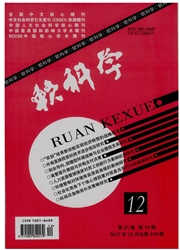

 中文摘要:
中文摘要:
基于IPCC推荐方法,结合我国交通能耗统计基础,提出省级交通运输能耗与碳排放测算方法和特征性评价指标,对2005~2012年江苏省公路运输、水路运输(含港口)和城市客运领域的能耗与碳排放现状进行研究测算,分析能耗与碳排放总量、分能源品种与分运输方式的比例结构、能耗与碳排放强度等方面的特点,最后提出低碳交通运输发展需以降低能耗与碳排放强度为核心、以公路货运为突破重点、以优化综合运输结构和优先发展公共交通为战略导向、以发展清洁低碳能源为重要途径等政策启示。
 英文摘要:
英文摘要:
Using the methodology recommended by Intergovernmental Panel on Climate Change ( IPCC) , based on transport energy consumption statistics in China , a practical calculation methodology and evaluation indicators of provincial transport energy consumption and carbon dioxide emission is proposed .The energy consumption and carbon dioxide emission of trans-port industry from 2005 to 2012 in Jiangsu Province were empirically calculated , and the main features were systematically analyzed , from the perspectives of the total amount of energy consumption and carbon emission , the proportional structure of various transport modes and energy types , and energy and carbon emission intensity .And finally, some policy implications of low-carbon transport development were conclusively put forward , including reducing the energy and carbon intensity as the focus, breaking through the highway freight transport as the key , optimizing transport structure and giving priority to urban public transport development as a strategic choice , developing clean and low-carbon energy as an important way .
 同期刊论文项目
同期刊论文项目
 同项目期刊论文
同项目期刊论文
 期刊信息
期刊信息
